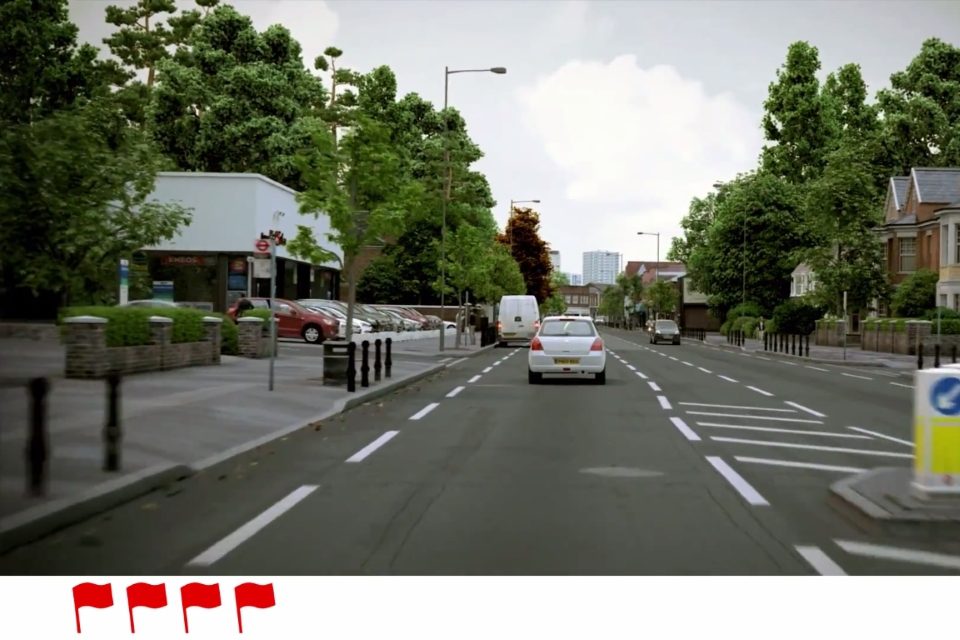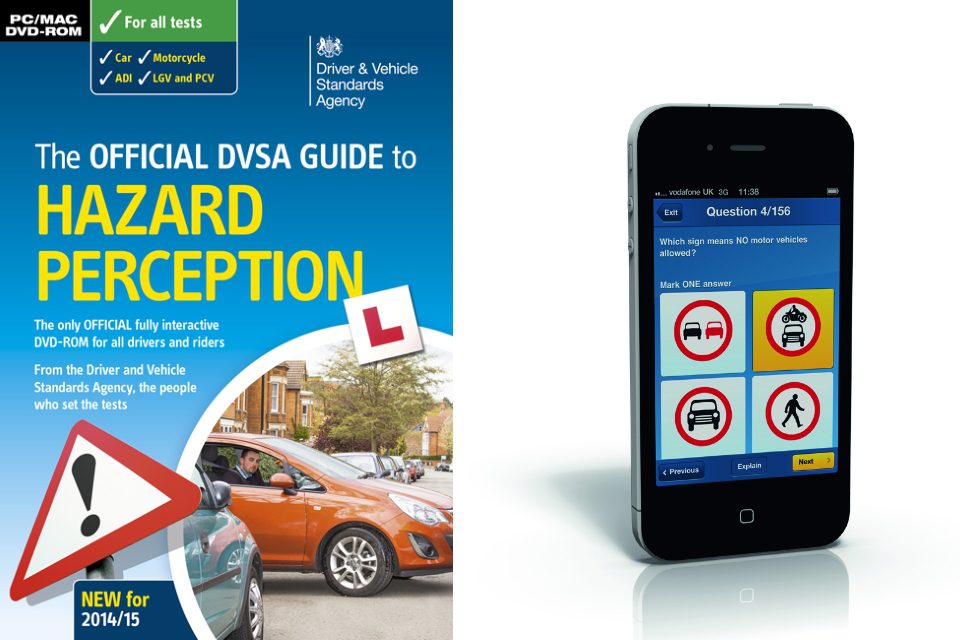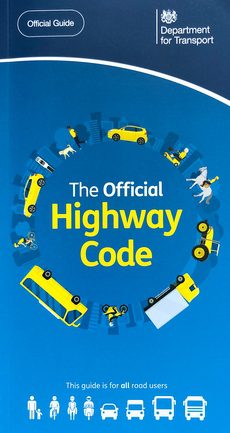
Navigating the roads safely is a significant responsibility. To ensure drivers are adequately prepared, the Hazard Perception Test forms a crucial part of the driving exam.
This article offers comprehensive tips and insights to help you pass the Hazard Perception Test on your first attempt.
Understanding the Hazard Perception Test
What is the Hazard Perception Test?
The Hazard Perception Test is a computer-based test that forms part of the theory exam required to obtain a driving licence in the UK.
It is designed to assess a candidate’s ability to identify potential hazards that can occur while driving. The test is crucial as it measures a driver’s awareness and their ability to respond appropriately to prevent accidents.
The Importance of the Hazard Perception Test in the Driving Exam
The importance of the Hazard Perception Test cannot be overstated. It is a vital component of the driving exam because it directly relates to everyday driving experiences.
The test evaluates a learner’s ability to spot hazards early and react to them in a timely manner. Effective hazard perception can significantly reduce the risk of accidents on the road, making it an essential skill for all drivers.
How the Test is Structured and Scored
The Hazard Perception Test consists of a series of video clips featuring various driving scenarios. Each scenario contains at least one developing hazard, but one of the clips will feature two.
Candidates need to click the mouse button as soon as they observe a hazard developing. The score depends on the speed of the response – the quicker you react to a developing hazard, the higher your score.
The maximum score for each hazard is five, and to pass, you must achieve a minimum of 44 marks out of the 75 available to pass.
Preparing for the Hazard Perception Test
Study Materials and Resources
Preparing effectively for the Hazard Perception Test requires the right materials and resources. Utilise official DVSA materials, which include a range of video clips that simulate the types of situations you will face in the actual test.
Many online platforms also offer practice tests that mimic the format of the real exam. These resources provide an excellent opportunity to familiarise yourself with the test layout and typical hazard scenarios.
Practice Hazard Perception test
Techniques for Improving Reaction Times
Improving your reaction times is critical for success in the Hazard Perception Test. Regular practice on simulated hazard perception tests is one of the best ways to enhance your reaction speed.

Additionally, playing video games that require quick reflexes can also help sharpen your responses.
It’s also beneficial to practice mindfulness and concentration exercises, as these can improve your overall alertness and speed in identifying hazards.
Understanding Different Types of Hazards
A key part of preparing for the Hazard Perception Test is understanding the different types of hazards you may encounter.
- Hazards can be static (such as parked vehicles)
- Dynamic (such as pedestrians crossing)
- Environmental (such as ice on the road)
- Related to other vehicles (such as a car suddenly braking).
Learning to anticipate these hazards and understanding how they might develop will help you react more effectively during the test.
Effective Practice Strategies
Using Official Practice Clips
The use of official practice clips is essential in preparing for the Hazard Perception Test. These clips are designed to closely mimic the actual test conditions and provide the most accurate practice experience.
The DVSA offers a variety of clips that cover a wide range of scenarios, each designed to challenge your ability to spot and respond to hazards.
Regularly practicing with these clips can significantly improve your hazard perception skills.
Simulating Test Conditions at Home
To maximise your preparation, it is beneficial to simulate test conditions at home. Create a quiet, comfortable space where you can focus without interruptions.
Practice on a computer similar to the one you will use on the test day to familiarise yourself with the layout and response times.
Timing your practice sessions can also help acclimatise you to the pace and pressure of the actual test, making it less daunting.
Feedback Analysis on Practice Tests
After each practice session, it is crucial to conduct a feedback analysis. Many practice platforms provide detailed feedback on your responses, highlighting your strengths and areas for improvement.
Analyse which types of hazards are more challenging for you and why you might miss or misinterpret certain scenarios.
Understanding your weaknesses and reviewing these situations can help refine your skills and boost your confidence for the actual test.
Tips for Taking the Hazard Perception Test
How to Identify Developing Hazards Early
Identifying developing hazards early is key to succeeding in the Hazard Perception Test. A developing hazard is something that would cause you to take action, such as changing speed or direction.
Look for signs of potential danger, such as children playing near the road or cars at junctions. The earlier you spot these signs, the better prepared you will be to react if the potential hazard becomes a real threat.
Strategies for Maximising Points
To maximise points in the Hazard Perception Test, it’s important to respond to hazards promptly but not prematurely.
Clicking too early before a hazard starts developing can result in a zero score for that clip. Practice timing your clicks to when you first notice a change in the environment that could lead to a hazard.
Remember, more points are awarded for earlier detections, so refine your ability to perceive and react as soon as a hazard begins to develop.
Common Pitfalls to Avoid During the Test
There are several common pitfalls to avoid during the Hazard Perception Test. One major mistake is over-clicking, which can make your responses seem like guesses rather than thoughtful reactions.
This can lead to a lower score or even a disqualification for that clip. Another pitfall is failing to stay focused throughout the entire clip; hazards can develop at any time, and losing concentration can cause you to miss critical cues.
Finally, ensure your mouse and computer are working properly to avoid technical issues that could impact your performance.
Importance of The Highway Code
Key Elements of The Highway Code Relevant to Hazard Perception
The Highway Code is fundamental in fostering safe and responsible driving habits, particularly when it comes to hazard perception.
Key elements of the Code relevant to the Hazard Perception Test include understanding signs, road markings, and the behaviours expected of drivers in various traffic conditions.
Familiarity with these elements aids in recognising and reacting to potential hazards more efficiently.

How Understanding The Highway Code Improves Hazard Perception
Understanding The Highway Code improves hazard perception by providing a clear framework of what to anticipate in different driving scenarios.
It outlines the correct procedures and reactions when faced with common and uncommon road situations.
This knowledge not only helps you in recognising potential hazards quickly but also instructs you on the appropriate responses, thereby enhancing your overall driving safety.
Applying The Highway Code in Hazard Perception Scenarios
Applying The Highway Code in hazard perception scenarios involves more than recognising signs and rules. It requires integrating these rules to make safe driving decisions quickly.
For instance, knowing that vehicles on roundabouts have the right of way helps you identify potential hazards as you approach and navigate roundabouts during the test.
Such applications of the Code prepare you to handle real-life driving situations safely and competently.
Integrating ‘Show Me, Tell Me’ With Hazard Awareness
How ‘Show Me, Tell Me’ Relates to Hazard Perception
The ‘Show Me, Tell Me‘ questions are part of the practical driving test where candidates demonstrate their knowledge on vehicle safety and maintenance.
Understanding how to check for a car’s operational integrity directly correlates with hazard perception. For example, knowing how to ensure your headlights are functioning properly is crucial for night driving, where visibility plays a significant role in identifying hazards.
Using Vehicle Safety Knowledge to Anticipate Hazards
Using vehicle safety knowledge to anticipate hazards is a critical aspect of effective driving. For instance, understanding the importance of tyre pressures and their impact on driving conditions can help anticipate how your vehicle will behave in wet or icy conditions, allowing for safer driving decisions.
This knowledge helps in anticipating how your car will react in various situations, thereby enhancing your hazard perception skills.
Practical Examples of ‘Show Me, Tell Me’ in Hazard Scenarios
In practical terms, ‘Show Me, Tell Me‘ knowledge can significantly aid in hazard scenarios. Knowing how to quickly demist your windows, for example, is crucial in sudden foggy conditions—a common hazard scenario.
Similarly, being familiar with how to check brake responsiveness through the brake fluid level can be life-saving if faced with a scenario where quick stopping is necessary.
Such practical knowledge is indispensable in enhancing your ability to deal with potential hazards effectively.
After the Test
Interpreting Your Test Results
After completing the Hazard Perception Test, interpreting your test results is crucial for understanding your performance.
The results will provide you with a score for each clip, indicating how quickly and accurately you identified the developing hazards.
It’s important to review these scores in detail to assess which types of hazards or scenarios posed more difficulty for you. This insight is valuable as it highlights areas where further improvement is needed.
How to Use Feedback to Improve
Using the feedback from your test results to improve is essential in enhancing your hazard perception skills. If your score on certain types of hazards was low, it suggests that you need more practice with those scenarios.
Use this feedback to focus your study on particular kinds of hazards or situations. Additionally, consider revisiting The Highway Code and any Hazard Perception Test materials to reinforce your understanding and response strategies.
Preparing for the Practical Driving Test
Preparing for the Practical Driving Test is the next step after completing the hazard perception component. This test assesses your ability to drive safely and competently in various driving conditions.
To prepare effectively, practice driving on different types of roads and in various traffic situations under the supervision of a qualified instructor.
Apply the knowledge from The Highway Code and insights gained from the hazard perception practice to real-world driving.
Furthermore, integrate the ‘Show Me, Tell Me‘ questions into your routine to ensure your vehicle is always in safe operating condition.
This comprehensive preparation not only boosts your confidence but also enhances your ability to handle potential hazards during the practical test.
By methodically using the feedback from your Hazard Perception Test and integrating it with hands-on driving experience, you will be well-prepared not only to succeed in the Practical Driving Test but also to be a vigilant and safe driver on the roads.
Frequently asked questions
The Hazard Perception Test is a part of the UK driving theory test. It assesses your ability to recognize potential hazards in driving scenarios. You will view video clips and must click the mouse when you see a developing hazard.
The test consists of several video clips, each containing at least one developing hazard. The faster you react to a developing hazard, the higher your score. You can score up to 5 points per hazard.
You need to score at least 44 out of 75 to pass the Hazard Perception Test.
Yes, you can practice the Hazard Perception Test online. There are many resources available, including official DVSA practice tests and various third-party websites that offer simulation tests.
Expect to see a range of hazards, including pedestrians crossing the road, vehicles merging into traffic, large vehicles obstructing view, children playing near the road, and environmental hazards like wet road surfaces.
The length of the test can vary, but it typically includes around 14 video clips, each about a minute long. The entire session, including instructions and questions, usually takes about 20 minutes.
Practice regularly using simulation tests, learn to anticipate hazards by understanding common risk factors, and improve your reaction times through video games or other exercises that require quick reflexes.
If you click excessively or in a pattern, the software may detect this as cheating, and you could score zero for that clip. It’s important to click only when you genuinely perceive a developing hazard.
Yes, you can retake the test if you fail. There is no limit to the number of times you can retake the test, but you must book and pay for each new attempt.
The Hazard Perception Test is designed to simulate real-life driving situations to prepare you for spotting and reacting to hazards quickly and safely.
It helps build the vital skills needed to prevent accidents, making it a critical component of driver education.
You can book the Hazard Perception Test as part of the theory test through the official DVSA online booking system or by calling the DVSA booking line (0300 200 1122).
The cost of the theory test, which includes both the multiple-choice questions and the Hazard Perception Test, is £23.
Ensure you have your UK driving licence number and a debit or credit card ready to book your test.
It’s recommended to book through official channels to avoid extra fees that third-party websites might charge.


